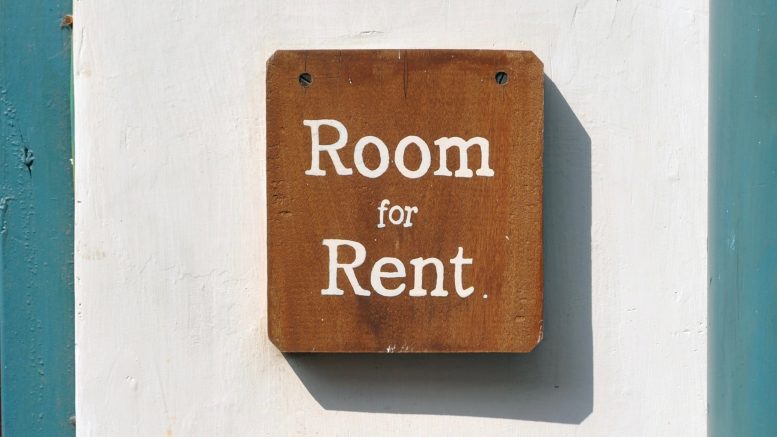By Alesha Blaauw and Chris Woodard
Lately renting in Sacramento can often be summed up with one word: “Packed.” Housed residents in the Sacramento region are sharing rooms with others at a higher rate, with many living in cramped conditions because of high rent costs and other economic obstacles.
About 43,000 Sacramento households live packed together in homes with more people than rooms, compared to around 35,000 households living in those conditions a decade ago. The number of people in packed rooms has increased significantly since the start of the COVID-19 pandemic, with the largest increase coming from households with more than 1.5 occupants per room.
“It’s simple math,” Ethan Evans, assistant professor of the School of Social Work at Sacramento State, said. “Housing costs are going up, and job availability plus pay for lower-skilled jobs is going down.”
The number of packed rooms peaked in the Sacramento region in 2021, and the 2022 data is about 600 households lower. The percentage of households occupying homes with more than 1.5 people per room nationally has grown from 1.1% in 2019 to 1.2% in 2022 compared to 1.4% in 2019 to 1.8% in 2022 for the Sacramento region, according to the U.S. Census.
“We’re seeing a lot of people having to find creative ways to stay housed in order to avoid homelessness,” said Susanna Curry, associate professor of the School of Social Work at Sacramento State. “A lot of people will go and double up with another family or another individual who already has housing as a way to have a place to stay that’s more affordable.”
Both Curry and Evans attribute the growth of this trend to economic factors in the country and the Sacramento region.
“California had really slowed down development of new housing, and unlike in some states, we don’t have the capacity to build as quickly or as many units as we need,” Curry added. “The lack of affordable housing leaves people without many options. As a result, the growing trend of packed rooms can be a precursor to homelessness.”
Although California has a minimum wage about $8 above the national rate, the National Low Income Housing Coalition lists the housing wage for a one-bedroom apartment in the four-county Sacramento region as $27 per hour. NLIHC defines housing wage as the estimated pay rate a full-time worker must achieve to afford rent without spending more than 30% of their income on housing.
The continued overpacking of rooms can affect housed residents of all kinds, especially those burdened by the unfortunate situations of others like Sacramento resident Jacob Peterson, who gained a new housemate earlier this year without knowing the new addition would include the individual’s spouse and 3-year-old child.
“I sympathize with needing to find somewhere to live for your family, but it puts the other person in a situation that they’re not necessarily prepared for,” Peterson said. “The utility bill is split between roommates, but that means I’m paying for half of a four-person bill.”
In addition to financial stress, housed residents can run the risk of breaking lease and insurance agreements while housing additional people. Also, couch surfers and additional guests do not have autonomy over their housing situation.
“They’re not on the lease; they could get evicted at any moment,” observed Bob Erlenbusch, executive director of the Sacramento Regional Coalition to End Homelessness. “It’s beyond their control.”
The increase in packed rooms and the increase in homelessness go hand-in-hand, according to the two professors and Erlenbusch.
“A startling statistic city council uses all the time is, for every one person last year that we ended homelessness for, three entered homelessness,” Erlenbusch said. “I think this is one of the pathways of how people enter homelessness.”
While the trend of crowded rooms continues to grow across the U.S., experts and Erlenbusch argued that the most effective way to move forward in the Sacramento region is to produce more attainable and accessible housing units.
“Until more affordable housing, truly affordable housing, is built in the city and the county, rents and home prices will continue to escalate,” Erlenbusch said. “People who are doubled and tripled up are not considered homeless, but under the Federal Department of Education definition, they are.”


Read the article to see why this is making a mountain out of a molehill. Less than 2% of household have more than 1.5 people per room. That is statistically insignificant, and not a new phenomenon. People have been living with roommates forever and everywhere. It’s certainly not evidence of a housing crisis.